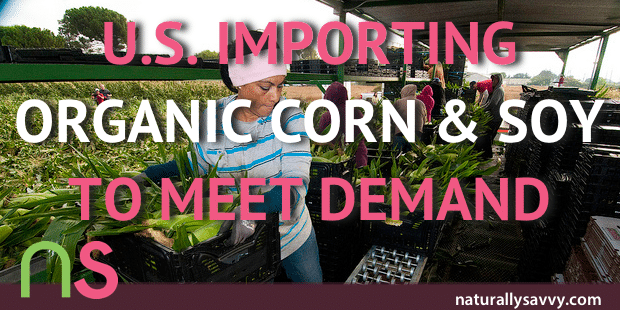
In the U.S. a shocking 88 percent of corn and 94 percent of soybeans are genetically modified. In order to ensure that your corn and soy are free of GMOs, you must buy organic. And while demand for both organic corn and organic soybeans are on the rise — increasing by a reported 10 percent annually, triple that of overall food sales — there’s not enough of the organic variety to meet demand. As a result, the U.S. has been forced to import organic corn and soybeans to meet growing demand.
We’ve had to turn to countries like Romania to import organic corn and India and China to import organic soybeans. The percentage of organic corn imported from Romania rose from $545,000 in 2013 to $11.6 million last year. What’s more, soybean imports from India doubled last year, according to JournalStar.com.
Much of the corn and soybeans in the U.S. must be used as feed for organic livestock, which require that feed not include synthetic fertilizers in order to be certified organic. The majority of GMO corn and soybeans in the U.S. end up in processed foods. For example, corn flour, corn gluten, corn masa, corn starch, corn syrup, cornmeal, and high-fructose corn syrup (HFCS) are all derived from corn and soy flour, soy protein, soy isolates, soy isoflavones, soy lecithin, vegetable proteins, textured vegetable protein (TVP), tofu, tamari, tempeh, and soy protein supplements are all derived for soybeans.
Read more about reasons to choose organic beer
As farmers become more dependent on GMO seeds, it’s harder for them to make the switch to organic, especially considering that organic farms must be free of non-organic seeds and chemicals for three years before they can be certified organic. However, there is hope. USDA is helping more small farms become certified organic by partially funding their certification costs. USDA’s Agricultural Marketing Service has nearly $12 million available to help farmers defray the cost of certification. But it’s definitely a small step when you take into account that the majority of U.S. farmland is devoted to conventional crops.
Read about ways you can impact the GMO movement everyday
Image: U.S. Department of Agriculture




